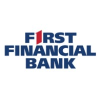Compare similar ETFs
 SSGA US Small Cap Low Volatility Index ETF
SMLV
SSGA US Small Cap Low Volatility Index ETF
SMLV
 Core S&P 500 ETF
IVV
Core S&P 500 ETF
IVV
 Core U.S. Aggregate Bond ETF
AGG
Core U.S. Aggregate Bond ETF
AGG
 S&P 500 Equal Weight ETF
RSP
S&P 500 Equal Weight ETF
RSP
 SSGA US Small Cap Low Volatility Index ETF
SMLV
SSGA US Small Cap Low Volatility Index ETF
SMLV
 Core S&P 500 ETF
IVV
Core S&P 500 ETF
IVV
 Core U.S. Aggregate Bond ETF
AGG
Core U.S. Aggregate Bond ETF
AGG
 S&P 500 Equal Weight ETF
RSP
S&P 500 Equal Weight ETF
RSP
| Market Cap The market value of the company. It's calculated by multiplying the share price by the number of outstanding shares. | $2.39 Billion | |
| Dividend Yield Yearly payout to shareholders per share. The percentage indicates the payout in relation to the share price. | 3.04 % | |
| Beta Indicates the relationship between the price performance of a share and the market. | 0.7324 | |
| P/E Ratio Ratio between share price and earnings per share. A low ratio could indicate that the stock is undervalued or investors aren't expecting high growth. A high ratio could indicate that the stock is overvalued or investors are expecting high growth. | 20.3 | |
| Negative P/E Ratio a negative P/E ratio shows that the company is not profitable, and it shows how many years it would take the company to lose its entire market capitalisation if it did not change anything | -44.77 | |
| Profitable Companies | 93 | |
| PEG The ratio between the P/E ratio and the growth rate of the company's earnings per share in the last twelve months. A lower PEG could mean that a stock is undervalued. | 135.01 | |
| Price to Sales Ratio Market cap divided by the revenue in the most recent year. | 3.34 | |
| Price to Book Ratio Price to Book Ratio is the Market cap divided by the Book value of the company | 1.63 |
| Enterprise Value to EBIT Enterprise Value divided by EBIT | 27.94 | |
| Enterprise Value to Revenue Enterprise value divided by revenue | 5.3 | |
| Total Debt to Enterprise Value Total debt divided by enterprise value | 0.18 | |
| Debt to Equity A higher ratio indicates a higher risk. However, the ratio is difficult to compare between industries where common amounts of debt vary. | NaN | |
| Profit Margin Net income divided by revenue of the last 4 quarters. It indicates the company's profitability. | 18.14% | |
| Quarterly Earnings Growth (YoY) The rate at which the company's net income has increased to the same quarter one year ago. | - | |
| Return on Equity Equity divided by market cap. | 94.17% | |
| Return on Assets Indicates a company's profitability in relation to its total assets. | 18.40% | |
| Return on Invested Capital Return on invested capital (ROIC) is net income after dividends divided by the sum of debt and equity. It shows how effective a company is at turning capital invested by shareholders and other debtholders into profits. | 1.12% |
| Finance | 26.6% |
| Industrials | 12.8% |
| Technology | 12.8% |
| Healthcare | 12.1% |
| Consumer Discretionary | 7.5% |
| Other | 4.6% |
| Real Estate | 3.6% |
| Consumer Staples | 3.1% |
| Utilities | 2.7% |
| Energy | 2.4% |
| Materials | 1.9% |
| Telecommunications | 1.7% |
| Consumer Cyclical | 0.2% |
| N/A | 7.7% |
| Micro Cap | 2% |
| Small Cap | 51% |
| Mid Cap | 47% |
| Large Cap | 0% |
| Mega Cap | 0% |

THG - Finance and Insurance

PJT - Finance and Insurance

VIRT - Finance and Insurance

NNI - Finance and Insurance

ONB - Finance and Insurance

CBU - Finance and Insurance

CNO - Finance and Insurance

NBTB - Finance and Insurance

ESGR - Finance and Insurance

GCMG - Finance and Insurance

HMN - Finance and Insurance

CHCO - Finance and Insurance

PRK - Finance and Insurance

SYBT - Finance and Insurance

TOWN - Finance and Insurance

FFIN - Finance and Insurance

EFSC - Finance and Insurance

IBOC - Finance and Insurance

NWBI - Finance and Insurance

MGRC - Transportation and Warehousing

NCBS - Finance and Insurance

NBHC - Finance and Insurance

TRMK - Finance and Insurance

BLX - Finance and Insurance